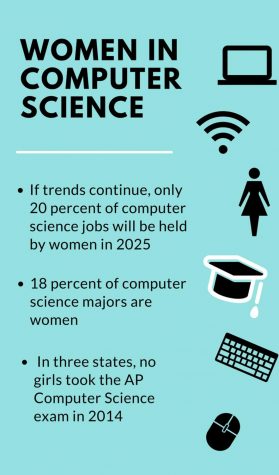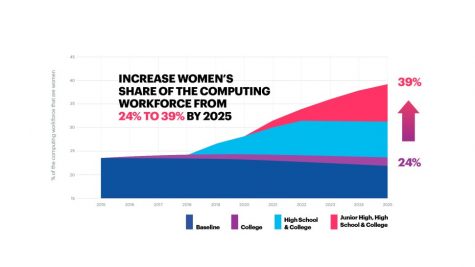Perspectives on Gender Equality in Computer Science

While it appears that the gender gap in the US is closing, equality across professions isn’t, well, equal. At American universities in 2018, women received nearly 70 percent of the combined bachelor’s, master’s, and doctoral degrees in health professions and related fields. The percentage of computer science bachelor’s degrees awarded to women in the US, however, has declined by over a factor of two from its peak in 1984 to merely 18 percent in 2018.
Kerstin Kleese Van Dam, director of the Computational Science Initiative at Brookhaven National Laboratory (BNL), notes this lack of progress over the course of her career. “When I studied, which is a long time ago now, there were already quite a few women there. I would say 20% women or so. And as far as I can tell that hasn’t shifted, we’re still at about 20% women.” This disappointing statistic stubbornly defies many of Brookhaven’s outreach efforts, such as recruitment drives and internships. According to Kleese Van Dam, this trend also seems to be common at national laboratories across the country.
What is causing this stagnation? Discrimination, both conscious and unintentional, has proven to be quite the dissuading factor. The 2016 “Elephant in the Valley” survey asked 200+ women working in Silicon Valley tech about their experiences with sexism, discrimination, and sexual harassment. Of the women surveyed, 60% had experienced unwanted sexual advances. Of that 60%, one third felt unsafe as a result.
Not all female computer scientists have experienced such egregious inequities – hopefully a sign of a changing world. “I haven’t seen any negative influence from being a female,” says Ziming Yang, a programmer at BNL, while talking about her university studies. Another female computer scientist, Dr. Elisha Siddiqui, agrees.
Director Kleese Van Dam agrees with the rarity of discriminatory experiences; she did not describe any instances of blatant bias or harassment. While this may be the case, she still mentions several instances where her capabilities were questioned in more subtle ways.
“There’s something called the glass cliff… women get put in positions where they’re more likely to fail,” says Director Kleese Van Dam. “So you have a project that doesn’t work very well and they put a woman in charge because… it maybe doesn’t matter as much if she fails or you can blame her then if it does.”
“I’ve got put in charge of a project with a tight deadline and absolutely no control over budget or people,” she continues. “I don’t think they would have done that necessarily with a male colleague.”
Director Kleese Van Dam also mentions how she feels that she was excluded from career advancement opportunities, saying “certainly there have been times where being a woman meant that people didn’t promote me into positions that normally I would have gotten if I had been a man. Because they made assumptions. That I needed more time for the children, things like that.”
A lack of role models also dissuades women from entering computer science careers. Seeing highly positioned women on the other hand can provide valued encouragement, as Director Kleese Van Dam has seen and numerous studies have shown. “I’ve had women who came over. They said I’m coming [to work here] because I can see there’s a career path for me… I think that it does help that women can see themselves in a role like that [of hers].”

Dr. Elisha Siddiqui echoes these sentiments. While working with some female high school students, Dr. Siddiqui describes the positive effects of her presence. “Being there as a [female] physics grad student was influential. They could see themselves get[ting] into the fields of science, computer science, or physics and not be intimidated.”
Oriented towards progress, BNL has several methods in place in addition to aforementioned outreach programs to try to improve workplace demographics, starting with offering practical support for working mothers.
“Many of my fellow students, female students started out the same as me, but they left the workforce when the first kids came,” Director Kleese Van Dam recounts. She cites the problem that with such a rapidly evolving field as computer science, it’s hard for women to get back on track in their careers after taking time off. “From the lab, we try to do the most we can to support, whether it’s flexible working hours… many of the conferences that you have these days actually have childcare facilities there.”
Ziming Yang mentions targeted inclusivity efforts in performance goals. According to Yang, you must describe “what you are going to do to achieve a goal in diversity to increase the diversity at BNL.”
Reaching gender parity in computer science is distant – but achievable. Efforts such as the programs put in place by Brookhaven National Laboratory are important steps working towards this equality.
Dr. Elish Siddiqui leaves a hopeful final message for young women interested in computer science: “I don’t think you should let your gender deter you in any way. And I don’t think we should use it in any form as an excuse that, ‘Oh, I cannot do this,’ or ‘I cannot excel in this field because I’m a female.’ I think, like Ziming said, if you want to do this, if you want to become a programmer, go ahead and learn.”







